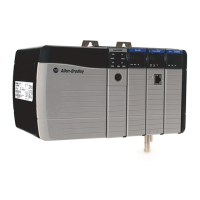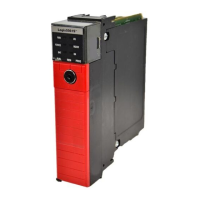Design a sequential function chart
Rockwell Automation Publication 1756-PM006I-EN-P - February 2018 35
If you want to Then
Use the same logic for multiple transitions.
The simplest way to program the transition is to enter the conditions as a BOOL
expression in structured text. A BOOL expression uses BOOL tags, relational
operators, and logical operators to compare values or check if conditions are
TRUE or FALSE. For example,
tag1>65.
To use a subroutine to control a transition, include an End Of Transition (EOT)
instruction in the subroutine. The EOT instruction returns the state of the
conditions to the transition, as shown below.
- or -
Call a subroutine.
Check for the required conditions. When those conditions are TRUE, turn on a BOOL tag.
Use an EOT instruction to set the state of the transition equal to the value of the BOOL tag. When the BOOL tag
is on (TRUE), the transition is TRUE.
Call a subroutine in a transition

